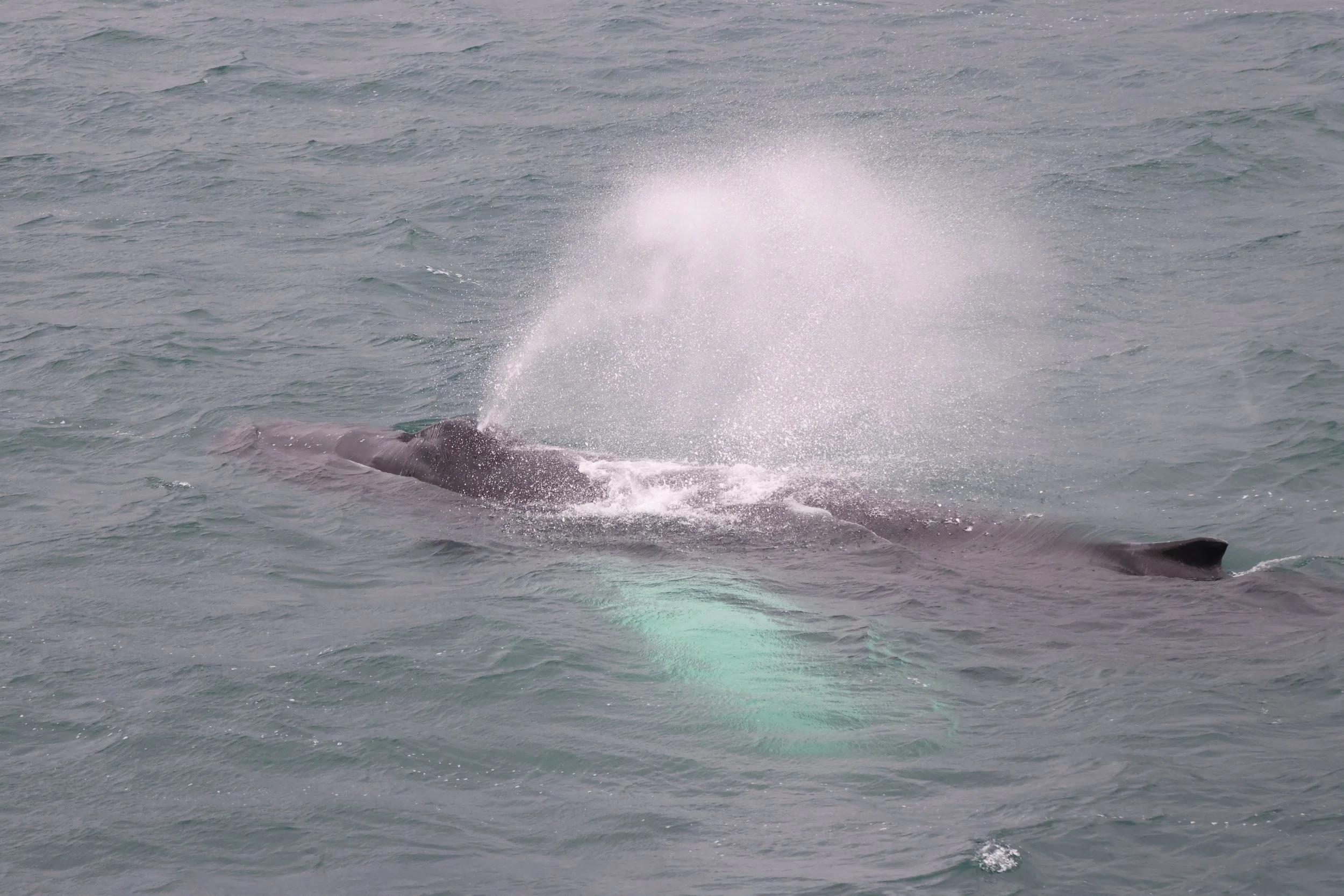Thursday, 7 August 2025





A Magical Day on Eyjafjörður
Eyjafjörður greeted us this morning under a soft blanket of clouds. The air was crisp and a gentle breeze rippled across the fjord, setting a tranquil tone for our morning whale watching tour. As the day progressed, the skies began to open, revealing patches of blue and welcoming a softer, warmer sun. By the afternoon, the wind had calmed, and the fjord was still; a perfect canvas for spotting marine life.
Adding to this day’s charm, the moon was high, bringing a generous high tide with it. This celestial rhythm has a fascinating effect on marine ecosystems: the increased tidal movement helps to push nutrient-rich water and with it, plankton closer to the surface. More plankton means more fish, and more fish… means whales.
And today, the whales did not disappoint.
As we approached the waters near Hjalteyri, we were welcomed by a stunning congregation of humpback whales (no fewer than ten of them) spread out around us. It felt like the fjord had turned into a bustling meeting ground for these gentle giants. We watched in awe as they displayed a full range of behaviors: slapping their tails forcefully on the surface, lunging while feeding, resting peacefully, and yes, even releasing the occasional cloud of whale poo, a humorous but vital part of the ecosystem!
It’s not every day we witness such an unusual assembly of humpbacks in one area. The fjord was alive with their presence; a powerful reminder of how dynamic and rich this environment is, especially in late summer.
On our way back, we encountered a small pod of harbour porpoises, gracefully cutting through the water’s surface near the boat. Shy and elusive, these small cetaceans rarely stick around for long, but today they gave us a few precious moments before vanishing into the deep.
But perhaps the most breathtaking encounter of the day came near Svalbarðseyri, where we spotted northern bottlenose whales, a group of six, including a mother with her calf. These deep-diving, elusive whales are rarely seen for long at the surface, as they are among the best divers in the whale world, capable of holding their breath for over an hour.
Unlike the humpbacks with their baleen plates, bottlenose whales have teeth, including a distinctive pair of visible tusk-like teeth in adult males. Their faces are more dolphin-like, and they rely heavily on echolocation to navigate and hunt in the pitch-black depths of the ocean. To see them this close, and especially to witness a calf swimming beside its mother, was a rare privilege and a beautiful end to a remarkable day.
Nature gifted us a memorable show today, from the moonlit tides to the majestic humpbacks and the rare northern bottlenose whales. These are the kinds of days that remind us why Eyjafjörður is one of Iceland’s most magical places for whale watching.
Text and Pictures: Sergio & Lenka
Departures of the day: Classic: 0900, 1000, 1300, 1400 & 1700 Express: 0800, 1000, 1200, 1400 & 1600
